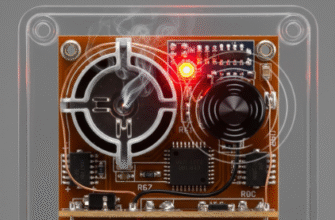That big, heavy door sealing off your garage seems simple enough when it glides up and down at the push of a button. But behind that smooth operation lies a fascinating blend of mechanics and crucial safety systems. Understanding how your garage door opener works isn’t just for the mechanically curious; it’s fundamental to ensuring it operates reliably and, more importantly, safely for years to come. These systems lift doors weighing hundreds of pounds, so appreciating their power and the safeguards built into them is essential.
The Heart of the System: How Openers Function
At its core, a garage door opener is an electric motor connected to a mechanism that physically moves the door along its tracks. When you press the button on your remote or wall panel, a radio signal tells the opener’s logic board to activate the motor. The real variation comes in *how* the motor’s power is transferred to the door.
Drive Mechanisms: The Power Transfer
Several types of drive systems exist, each with its own characteristics:
- Chain Drive: This is often the most common and budget-friendly option. Like a bicycle chain, a metal chain runs along a rail, connecting the motor to a trolley. The trolley attaches to the door via an arm (the J-arm). Pros: Strong, durable, and cost-effective. Cons: They tend to be the noisiest option due to the metal-on-metal contact.
- Belt Drive: Functionally similar to a chain drive, but uses a steel-reinforced rubber belt instead of a chain. Pros: Significantly quieter operation, making them ideal for garages attached to living spaces. Cons: Usually more expensive than chain drives, and the belt may eventually require replacement, though they are very durable.
- Screw Drive: Here, the motor rotates a long threaded rod (screw). The trolley moves along this threaded rod. Pros: Fewer moving parts compared to chain or belt drives, potentially leading to less maintenance. They can offer good power for heavy doors. Cons: Can be somewhat noisy (though often less than chain drives) and performance might be affected by extreme temperature fluctuations. They also require periodic lubrication of the screw.
- Direct Drive (Jackshaft): A different approach altogether. Instead of a long rail down the center of the garage ceiling, this type mounts on the wall beside the garage door, directly turning the torsion bar (the bar with springs above the door). Pros: Extremely quiet, frees up overhead ceiling space, clean look. Cons: Typically the most expensive option and requires a specific garage setup with a torsion spring system. Not suitable for all garage configurations.
Regardless of the drive type, the motor turns the mechanism (chain, belt, or screw), which moves the trolley along the rail. The trolley is attached to the door via the J-arm, pulling the door open or pushing it closed along its vertical and horizontal tracks, guided by rollers.
Non-Negotiable: Safety Features Explained
Given the weight and force involved, garage door openers are mandated to include several critical safety features. Never disable or ignore these systems; they are there to prevent serious injury or damage.
The Auto-Reverse Mechanism
This is a fundamental safety feature. If the closing door encounters an obstruction (like a misplaced bike, trash can, or heaven forbid, a person or pet), the opener senses the increased resistance. Modern openers are designed to immediately stop and reverse direction, reopening the door. This relies on force settings within the opener motor. It’s crucial that this force is set correctly – enough to close the door reliably, but not so much that it fails to reverse upon meeting resistance.
Photoelectric Sensors (Safety Eyes)
You’ll see these small sensors mounted near the bottom of the door tracks, typically about 4-6 inches off the floor. One unit emits an invisible infrared beam, and the other receives it. If anything breaks this beam while the door is closing, the opener must immediately reverse the door to the fully open position. This is a secondary, non-contact safety system crucial for preventing the door from closing on someone or something lying flat on the ground that might not trigger the force-based auto-reverse.
Never tamper with or misalign your photoelectric safety eyes. They are legally required on openers manufactured after 1993 for a reason. Ensure they are correctly installed near the floor and test them monthly by obstructing the beam while the door closes; the door should immediately reverse.
Manual Emergency Release
Every opener has a manual release mechanism, usually a red cord with a handle dangling from the trolley assembly. Pulling this cord disconnects the door from the opener’s drive mechanism. This is essential for several reasons:
- Power Outages: Allows you to open and close the door manually when the electricity is out.
- Malfunctions: If the opener fails, you can still operate the door.
- Emergencies: Provides a quick way to manually lift the door if someone is trapped.
Rolling Code Technology
Early garage door openers used fixed codes for their remotes. This made them vulnerable, as someone could potentially capture the code and gain unauthorized access. Modern openers use rolling code technology (also known as security+ or intellicode, depending on the brand). Each time you press the remote button, it sends a new, unique code to the receiver. The receiver knows the algorithm used to generate the next code in the sequence. This makes it virtually impossible for someone to grab your code out of the air and reuse it, significantly enhancing your home’s security.
Keeping Things Running Smoothly: Maintenance Matters
Like any mechanical system, your garage door opener and the door itself require periodic maintenance to ensure safe, reliable operation and extend their lifespan. Ignoring maintenance can lead to noisy operation, malfunctions, and potentially unsafe conditions.
Regular Checks You Can Perform:
- Visual Inspection: Monthly, take a look at the tracks, rollers, cables, and springs (Important: Do not attempt to adjust or repair high-tension springs or cables yourself; this requires professional expertise due to the extreme forces involved). Look for obvious signs of wear, damage, or loose hardware.
- Test Auto-Reverse (Force Setting): Place a piece of 2×4 lumber flat on the floor in the door’s path. When the closing door contacts the wood, it should immediately reverse. If it doesn’t, the force setting needs adjustment (consult your owner’s manual) or there may be a problem requiring professional service. Perform this test monthly.
- Test Safety Eyes: While the door is closing, simply wave an object (like a broom handle or your leg) through the infrared beam path near the floor. The door should immediately stop and reverse. Test this monthly.
- Test Manual Release: With the door closed, pull the red emergency release cord. You should now be able to lift the door manually. It should lift relatively smoothly and stay open around the halfway point (if properly balanced). Test this every few months and ensure everyone in the household knows how it works.
- Check Door Balance: With the opener disengaged (using the manual release), try lifting the door by hand. It should feel relatively easy to lift and should stay fully open, fully closed, or partially open (around halfway) on its own. If it feels very heavy, slams down, or is difficult to move, the door springs may need adjustment by a qualified technician. An unbalanced door puts excessive strain on the opener motor.
- Lubrication: Refer to your owner’s manual, but generally, the door’s moving parts (rollers, hinges, bearings) and sometimes the opener’s rail (especially screw drives) benefit from lubrication every six months or so. Use a silicone-based or lithium grease spray specifically recommended for garage doors. Avoid heavy grease that can attract dirt. Do not lubricate plastic parts unless specified by the manufacturer.
Consistent maintenance is key to a long-lasting and safe garage door system. Simple monthly tests of the auto-reverse function and safety eyes take only minutes but are crucial for preventing accidents. Lubrication and balance checks help prevent premature wear on the opener and door components.
Choosing Your Opener
When selecting a new opener, consider factors beyond just the drive type. Think about the size and weight of your garage door – heavier or larger doors need more powerful motors (typically measured in horsepower, HP, or Newton force). Consider your tolerance for noise, especially if bedrooms are near the garage. Belt drives and direct drives offer the quietest operation. Budget is always a factor, with chain drives being the most economical. Finally, consider modern features like battery backup (for operation during power outages) and smart home connectivity (allowing control and monitoring via smartphone apps).
Final Thoughts
Your garage door opener is a workhorse, combining electrical and mechanical systems to provide convenience and security. Understanding its basic mechanics, knowing its vital safety features, and performing regular maintenance checks are not just good practices – they are essential responsibilities. By taking a little time to familiarize yourself with how it operates and how to test its safety systems, you ensure it continues to serve you reliably and safely for many years.
“`






